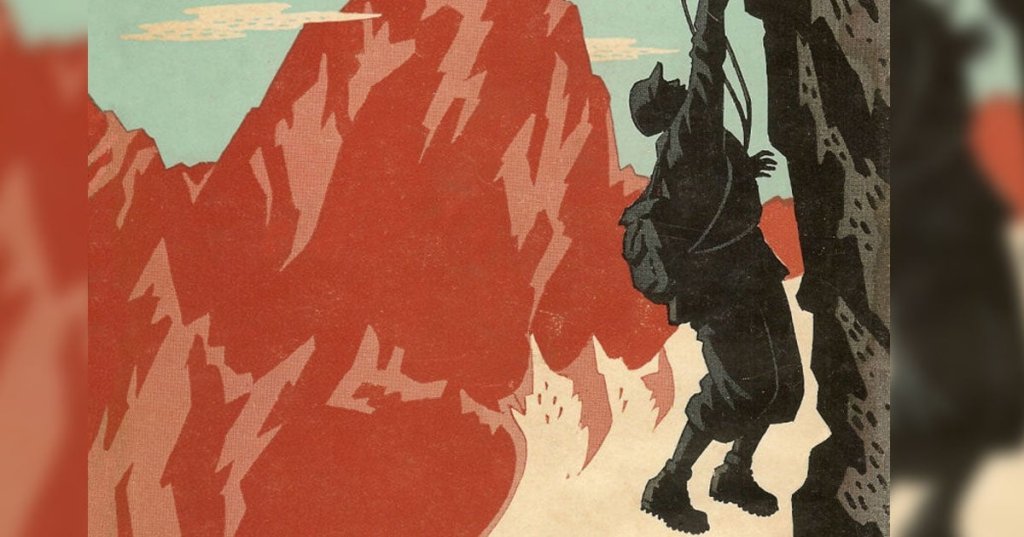On Jan. 23, 1943, an Italian POW named Felice Benuzzi, who was being held by the British in Africa, escaped.
But for a very peculiar reason.
Once free of the wire, Benuzzi and two other prisoners who escaped with him spent the next two weeks working their way up the south side of the nearby 17,000-foot Mt. Kenya, their only map a sketch of the mountain they found on a can of Oxo corned beef.
Then they returned to the POW camp.
A member of the Italian Colonial Service, Benuzzi was taken prisoner when the British liberated Ethiopia in 1941 and was imprisoned beneath Mt. Kenya in Camp 354, a camp for civilian POWs. There he encountered the mountain, the first 17,000-foot peak he had ever seen. In his 1952 book about the camp and the mountain, No Picnic on Mt. Kenya, Benuzzi said he “fell in love” with the mountain the first time he saw it.
Not so the camp.

He quickly became bored with the routine and the inactivity of Camp 354, a huge camp that could accommodate up to 10,000 prisoners.
“The sole activity for this host of people was to wander round the camp… They just walk and stop when they see other people talking. Then they stay for a while and join in the conversation,” Benuzzi wrote.
He quickly decided he had to take some action — do something to stay sane. He had been a mountaineer in the Alps before the war, and he decided the something he would do was climb Mt. Kenya.
He recruited another prisoner, Giuàn Balleto, a doctor and (like Benuzzi) a mountaineer before the war, and the two men set about making, buying, and stealing the equipment and food they would need to tackle the mountain.

They hoarded what they could from their rations and stopped smoking so they could use the cigarettes to buy supplies and food from other prisoners. They made crampons from steel taken from a scrapped automobile and an oven cover, ice-axes from hammers, and ax-handles that doubled as tent poles.
At the last minute, they recruited a third man, Enzo Barsotti, a non-mountaineer who would help with the escape and climb, but would not be in on the attempt at the summit.
“The only reason we decided to [recruit] him,” Benuzzi wrote, “was because he was universally thought to be mad as a hatter, and mad people were what we needed.”
When they were finally ready, they simply walked out of the camp through a gate that opened into the camp gardens using a key they had stolen and copied, accompanied by another prisoner disguised as a British officer. The three men holed up in a shed near the gardens until dark, dug up the supplies and equipment they had hidden there earlier, and began working their way up the mountain.
They had also left a note for the camp commander explaining what they were doing and promising to return.
They spent a week climbing to about 14,000 feet where they established a base camp and where Barsotti, who was by then suffering from altitude sickness, remained while the other two men headed to the summit.

But as Benuzzi and Balleto continued on, a storm blew in and the limitations of their homemade equipment became obvious. They made it to over 16,000 feet but could go no farther. There, they left an Italian flag they made for the purpose and a piece of paper with heir names sealed in an empty brandy bottle.
They then headed back to the base camp and – after a brief rest – began their descent, finally slipping back into Camp 354 as part of a work party.
It was the 18th day after the POW escape.
When they were discovered, they were each sentenced to twenty-eight days solitary confinement, but were released after seven days, Benuzzi wrote, because the camp’s commander “appreciated our sporting effort.”

After the war, Benuzzi continued in the Italian diplomatic service at several postings, including to the United Nations in New York and as ambassador to Uruguay. He died in Rome in 1988.
No Picnic on Mount Kenya is considered a mountaineering classic.


